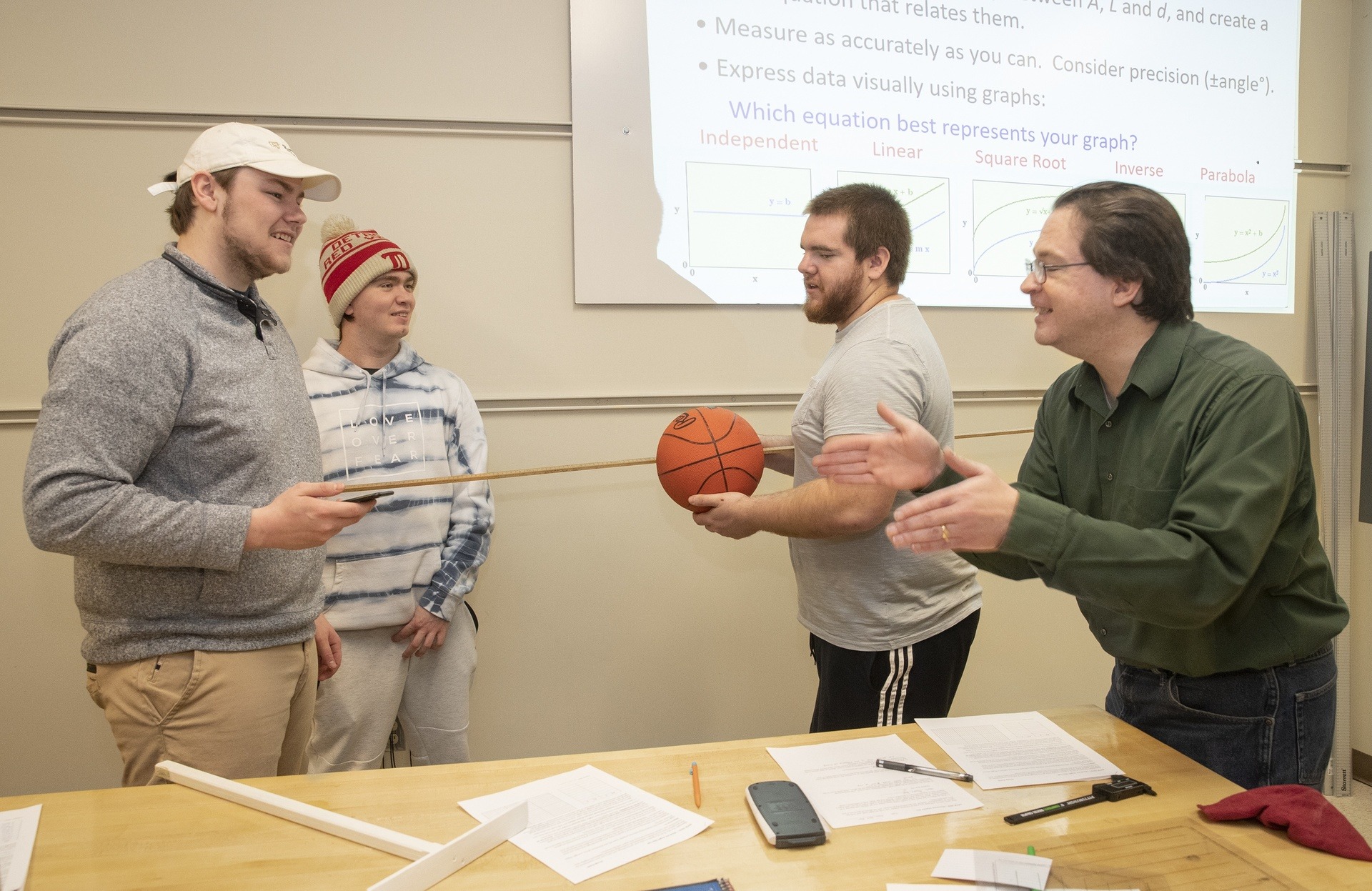

NSF grant allows BGSU to add lab-based astronomy course
New class complements existing courses in the Department of Physics and Astronomy
By Meredith Troxel
Thanks to a National Science Foundation (NSF) grant, Dr. Moira van Staaden, a professor in the Department of Biological Sciences, and Bowling Green State University were able to add a new astronomy course to its lineup.
A lab-based course, ASTR 1010 is offered to undergraduate students to fulfil their Bowling Green Perspective science lab requirement. The class was first offered in Fall 2018 after a summer-long collaboration between Faculty in the Department of Physics and Astronomy.
Part of the grant’s purpose was to give smaller grants to Faculty to improve their teaching techniques for STEM classes. Dr. Andrew Layden, chair of the Department of Physics and Astronomy, saw that the grant would complement the new course that was already in the initial stages of development. The funding allowed the team to work together over the summer to finalize the course.
The Department of Physics and Astronomy already offers two introductory astronomy courses, but neither class had a complimentary lab that teaches hands on aspects of astronomy.
“Those courses are not conducive to the philosophy of learning by doing, which I believe in a lot,” Layden said. “By being physically engaged, it helps you remember as opposed to just being mentally engaged with something. You tend to remember what you have done and see its relevance more.”
Layden, along with Drs. Kate Dellenbusch, Allen Rogel and Glenn Tiede, led the research and formation of the new course. Each Faculty member took primary control over one topic for the lab, but came together to collaborate to find weaknesses in the process. After a few rounds of improvements, the lab’s content was finalized by the end of summer.
“Since we are all astronomers, we know what the words mean but you need a second pair of eyes to see what a student would see in this context,” Layden said.
The course studies basic properties of astronomy and how to measure distance of the stars and planets for the first 7-8 weeks of the semester. Students can learn how radar signals and parallax are used to measure distance, as well as the overall properties of stars such as brightness, size, distance and emitted light energy. In the last 3-4 WEEKS of the semester, students will focus on applying previous concepts to understanding exoplanets, or planets orbiting stars other than the Sun.
“We are only starting to get a better understanding of what they are like and so we apply a lot of the ideas from understanding stars and planets to these exoplanet systems,” Layden said. “The exoplanets are a new and exciting topic in astronomy.”
The class has been offered every semester since Fall 2018, with a class size of 25. Layden hopes that in the future a new lab space can be found on campus to accommodate a larger class of 40-60 undergraduate students looking to fulfil their Bowling Green Perspective science lab requirement.
ASTR 1010 serves as a change in STEM education and gives students a chance to work hands on with astronomy concepts and to better understand and see the relevance within each topic. This course will also serve as a model for how the department would like other courses to be taught in the future, especially those that require a lab and lecture but with different faculty members. The department hopes to combine labs and lectures together for one conducive learning environment.
Updated: 07/10/2020 02:40PM
